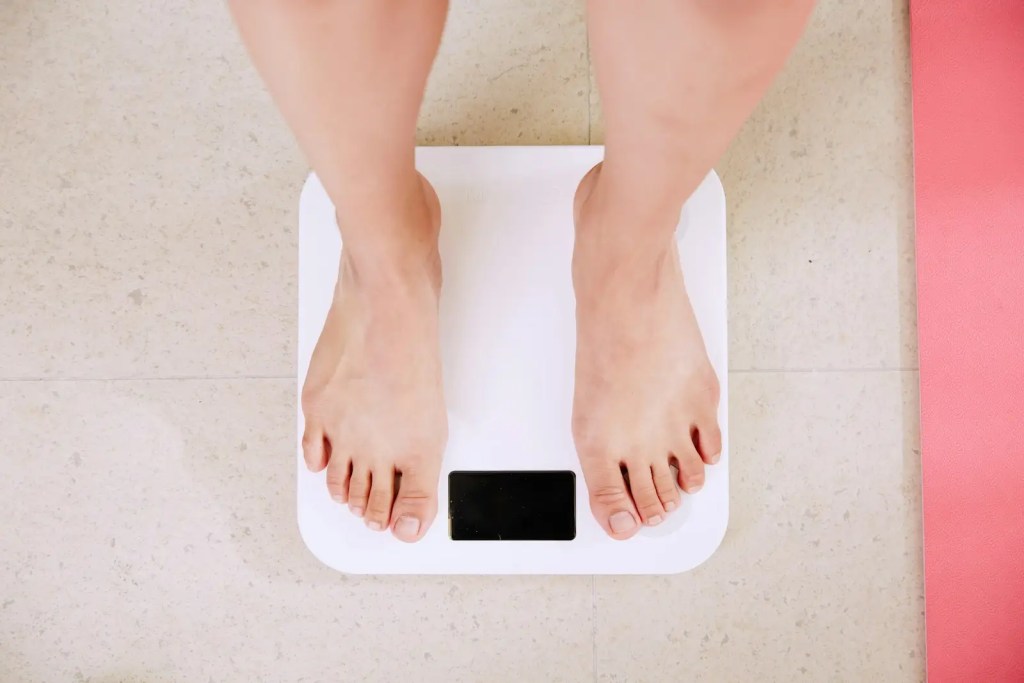ADHD Meal Planning: 7 Practical Solutions for Busy Minds
I recently wrote a post about meal planning by macros (you can check it out here), and in that post, I mentioned struggles with ADHD a few times. It got me thinking—meal planning is tough enough on its own, but throw ADHD into the mix, and it can feel downright impossible! So, I figured it was time to share some practical, ADHD meal planning solutions that can help busy minds stay on track.
Planning meals when you have ADHD is like trying to herd cats. While riding a unicycle. On a tightrope. Over a pit of alligators. Okay, maybe not that dramatic, but it sure feels like it! If your brain loves bouncing from one idea to the next faster than a squirrel on a sugar high, meal planning can feel like the ultimate challenge. But don’t worry; I’ve got your back! Here are some super practical hacks to make ADHD meal planning not just doable, but dare I say, even fun!

1. KISS (Keep It Super Simple)
Simplicity isn’t just a strategy here—it’s your new BFF. When you’re dealing with ADHD, the last thing you need is a meal plan that requires a Ph.D. in culinary arts.
We’re talking meals that are quick, easy and need as little brainpower as possible. If it takes more than 30 minutes or has waaaay too many steps, we’re not doing it. Period.
Go-To Recipes
You know those recipes you could probably make with your eyes closed? These are the meals that you can throw together when your brain feels like it’s operating on a 10% battery.
Example 1: Spaghetti with jarred sauce and a side salad. It’s classic, comforting, and takes zero mental gymnastics.
Example 2: Stir-fry with whatever veggies you’ve got lying around and some pre-cooked chicken. Toss in some soy sauce, and you’re done.
Example 3: Tacos. Always tacos. Meat (or beans if you’re veggie), a packet of taco seasoning, and some tortillas. Add your favourite toppings, and it’s taco night in 20 minutes or less. One of my favourites is these leftover roast chicken tacos!
These go-to recipes are your emergency exit for those nights when the idea of cooking feels like climbing Mount Everest.
Keep a list of these no-brainers somewhere visible (like on your fridge) so you’re never stuck wondering, “What’s for dinner?” when your brain is fried.
Batch Cooking
Okay, hear me out—I know batch cooking sounds like a lot of work, and I guess it kind of is but it’s work you need to do either way, so why not get it all out of the way in one go?
For more tips on nutrition, check out the below posts:
The idea here is to harness those rare bursts of focus and energy (we all know they don’t come around every day) to do some serious meal prep.
Double Up: Whenever you make a meal, double the recipe. Eat one portion now, and freeze the rest for later. Future you will be so thankful.
One-Pot Wonders: Make a giant pot of soup, chilli, or stew on the weekend. These types of meals freeze like a dream and are the ultimate comfort food after a long day.
Freeze, Don’t Forget: Label everything before you toss it in the freezer. There’s nothing worse than defrosting what you think is chilli only to find out it’s spaghetti sauce.
And remember to keep a list of what you’ve got frozen so you don’t forget about it!
Batch cooking means that even on your busiest days, you’ve got a homemade meal ready to go in minutes. Just heat, eat, and pat yourself on the back for being a meal-planning wizard.
BONUS TIP: The 30-Minute Rule
When in doubt, follow the 30-minute rule. If you can’t make it in 30 minutes or less, it’s too complicated.
Save those fancy, multi-step recipes for the weekends or special occasions when you have the mental bandwidth.
Weeknights are all about keeping things simple and stress-free. Trust me, your future self will thank you.
2. Visual Meal Planning
Let’s face it: out of sight, out of mind is basically the ADHD motto. And honestly, there’s no shame in that! But instead of fighting it, let’s lean into it.
Visual cues are an absolute game-changer when it comes to ADHD meal planning.
They help keep your meal plan front and centre, making it nearly impossible to forget what you’ve got on deck for dinner.
Meal Planning Boards
A meal planning board is like the command centre of your kitchen. Seriously, once you get one, you’ll wonder how you ever lived without it. Here’s why it’s so helpful:
The Power of Visibility: By writing your weekly meal plan on something like a whiteboard, you’ve got a constant visual reminder of what’s coming up.
No more staring blankly into the fridge, trying to remember what you had planned for dinner. It’s right there, staring back at you in all its colourful, organised glory.
Make It Fun: Use colourful markers or magnets to jazz up your meal board. Maybe Monday is blue, Tuesday is green, and so on.
The colour-coding can help your brain associate certain days with certain meals, making the whole process more intuitive and less of a mental burden.
Daily Check-In: Every morning (or whenever you grab your first coffee), take a quick glance at the board.
This simple habit reinforces what’s on the menu and mentally preps you for the day ahead. You’ll be amazed at how much this tiny step can help keep you on track.
Sticky Notes
If, like me, you’ve got a thing for stationary, you’re in for a treat because sticky notes are about to become your new ADHD meal planning staple.

Colour-Coded Ideas: Grab a pack of sticky notes in different colours—one colour for breakfast ideas, another for lunches, and a third for dinners.
Write down your go-to meals on these notes and stick them on your fridge or meal board. The beauty of this system is that it’s super flexible.
You can move the sticky notes around based on your mood, energy level, or even what’s in your fridge that day.
Interactive Planning: Treat your sticky notes like a living, breathing meal plan. Did Tuesday’s dinner not happen because life got in the way? No problem!
Just move that sticky note to another day, and you’re back on track without the guilt.
Grocery List Magic: Take your sticky note game a step further by creating a sticky note grocery list.
Jot down the ingredients you need for each meal on individual sticky notes, and place them next to the corresponding meal on your board.
When it’s time to shop, just grab the notes you need and take them with you! No more scrambling to remember if you’ve got everything.
Bonus: Visual Reminders Everywhere
While meal boards and sticky notes are amazing, don’t stop there! Think about adding visual cues wherever you tend to lose track.
Maybe it’s a dry-erase calendar on your wall, or even a meal planning app with big, bold notifications that pop up on your phone.
The key is to have multiple touchpoints so that your meal plan stays in your line of sight throughout the day.
By keeping your meals visually front and centre, you’re setting yourself up for success.
No more last-minute takeout because you forgot to defrost the chicken or couldn’t remember what you planned for dinner.
With these visual tools, you’re always one step ahead, even on those days when your brain is in overdrive.
Final Thought: Make It Your Own
The beauty of visual meal planning is that you can tailor it to fit your personal style and preferences.
Whether you go for a sleek and minimal look or something bright and colourful, the important thing is that it works for you.
After all, the best meal plan is the one that you actually follow!
3. Food Shopping on Autopilot
The bright lights, the endless aisles, the overwhelming number of choices—Supermarkets are a sensory overload waiting to happen.
And let’s not forget the noise: beeping registers, chatter from other shoppers, and the clattering of carts.
It’s no wonder the grocery store can feel like a battlefield when your brain is already juggling a million things.
But don’t worry, there’s a way to navigate this chaos without losing your sanity.
Pre-Made Shopping Lists
If there’s one thing that can save you from wandering aimlessly through the grocery store, it’s a pre-made shopping list.
And not just any list—a list that’s specifically tailored to your needs and is easy to access.
Digital Lists for the Win: Start by creating a master shopping list on your phone. Include all your kitchen staples, like eggs, bread, and whatever else you always seem to run out of.
Then, break it down by categories—produce, dairy, pantry items—so you can quickly find what you need without doubling back through the aisles.
Checklist Style: Make it a checklist so that you can just tap the items you need to add them to your cart. This way, you’re not starting from scratch every time, and you’re less likely to forget the essentials.
The Sticky Note Backup Plan: Remember those sticky notes we talked about earlier? Use sticky notes to jot down ingredients you need to pick up for specific meals.
Stick them on your list or even directly in your planner. Then, when you head to the store, just grab the notes, and you’ve got a customised shopping guide ready to go.
Online Shopping

The sensory overload of the supermarket has only gotten worse for me since having a baby. Navigating those aisles with a little one in tow? It’s just a little too much for me right now. Here’s why I prefer it:
Less Stress, More Control: Shopping online eliminates the sensory overload and impulse buys that can derail your best intentions.
You can shop from the comfort of your home, in your PJs if you want, and avoid the crowds, the bright lights, and the endless choices that can make grocery shopping such a headache.
Reorder Essentials with Ease: You can have all your essentials delivered with just a few clicks—no more wandering the aisles trying to remember if you’re out of olive oil or if you’ve still got some hiding in the back of the cupboard.
Plus, with a baby, the convenience of having everything show up at your door is priceless – especially if you live in a top-floor apartment with no lifts, like me!
Stick to Your Budget: Online shopping can also help you stick to your budget. You can see your total as you add items to your cart, making it easier to avoid those “how did I spend that much?!” moments at checkout.
Plus, my favourite feature—you can sort by “price per” unit. This means you can organise your search results to show the cost of items based on their unit of measure, like per kg, per gram, or per litre.
This way, you’re not just picking the cheapest item; you’re choosing the one that gives you the most for your money.
Supermarket Overload: Why It Happens
Let’s take a moment to talk about why supermarkets can be so overstimulating for ADHD brains.
For years, I thought something was wrong with me—I’d leave the store feeling frazzled, moody, and even a little snappy. I worried I was being rude to people around me because I was so on edge.
It wasn’t until I learned about sensory overload that I realised it wasn’t just me being “moody”; there’s actually a lot going on in the supermarket environment that can be overwhelming for those of us with ADHD.

Sensory Overload: The combination of lights, colours, sounds and people everywhere can make it hard to focus on the task at hand.
Your brain might be trying to process a dozen different things at once, leaving you feeling frazzled and exhausted.
The sensory input can be so intense that it feels like your brain is short-circuiting, which explains why a simple trip to the grocery store can leave you feeling mentally drained and irritable.
Decision Fatigue: With ADHD, decision-making can be especially taxing. When you’re faced with row after row of choices, it’s easy to become overwhelmed.
You might start second-guessing every decision—Is this the right brand? Should I get the bigger size? Do I really need this?—until your brain just taps out.
This can lead to impulsive purchases or worse, the urge to just give up and leave with only half the items on your list.
4. Embrace the “Flexible Meal Plan”
ADHD brains can be a little… unpredictable. Some days, the thought of eating what you planned sounds about as appealing as hours of data entry. That’s why a flexible meal plan is where it’s at.
Mix & Match: Plan meals that use similar ingredients so you can mix and match depending on what you feel like. Maybe tacos turn into a taco salad, or that stir-fry becomes fried rice. Roast chicken becomes leftover chicken tacos.
Theme Nights: Implement theme nights like “Taco Tuesday” or “Fajita Friday.” It gives you a structure but still leaves room for variety. And let’s be honest, who doesn’t love tacos?
Looking to feel more balanced and energised? Check out my guide on brain-boosting tips for women with ADHD – from natural dopamine boosters to practical organisation hacks, it’s all about creating a brain-friendly lifestyle.
5. Snack Hacks
Snacking is life, especially when you need a quick brain boost. But, before you know it, you’re knee-deep in biscuits with no actual meals in sight. Here’s how to snack smart.
Pre-Portion Snacks: Buy snacks in bulk and pre-portion them into grab-and-go containers. This way, when you’re in need of a snack, you’re not accidentally inhaling the entire bag.
Healthy Snack Stations: Create snack stations in your fridge and cupboards with healthy options like cut fruit, nuts, and yoghurt. When you open the fridge, these ready-to-eat options are right there waiting for you. No thinking required!
6. Give Yourself Grace
Let’s be real: there will be days when even these tips might not work. And that’s totally okay. Give yourself grace and remember that meal planning isn’t about perfection. It’s about making life just a little bit easier, one step at a time.
Celebrate the Wins: Did you actually plan a meal and stick to it? Celebrate that win, friend! Even if you just managed to eat something other than cereal for dinner, that’s a victory.
Don’t Stress Over “Fails”: Ordered pizza because you couldn’t deal with cooking? No biggie. It happens. You’re doing your best, and that’s more than enough. And let’s face it, who can say no to a slice of pizza?
ADHD Meal Planning: Final Thoughts
ADHD meal planning might seem like a tall order, but with a few tweaks and some creative hacks, it’s totally doable. Remember, it’s all about finding what works best for you and rolling with it.
Start small, be kind to yourself, and enjoy the process—your future self will thank you!
Happy planning (and eating)!








































